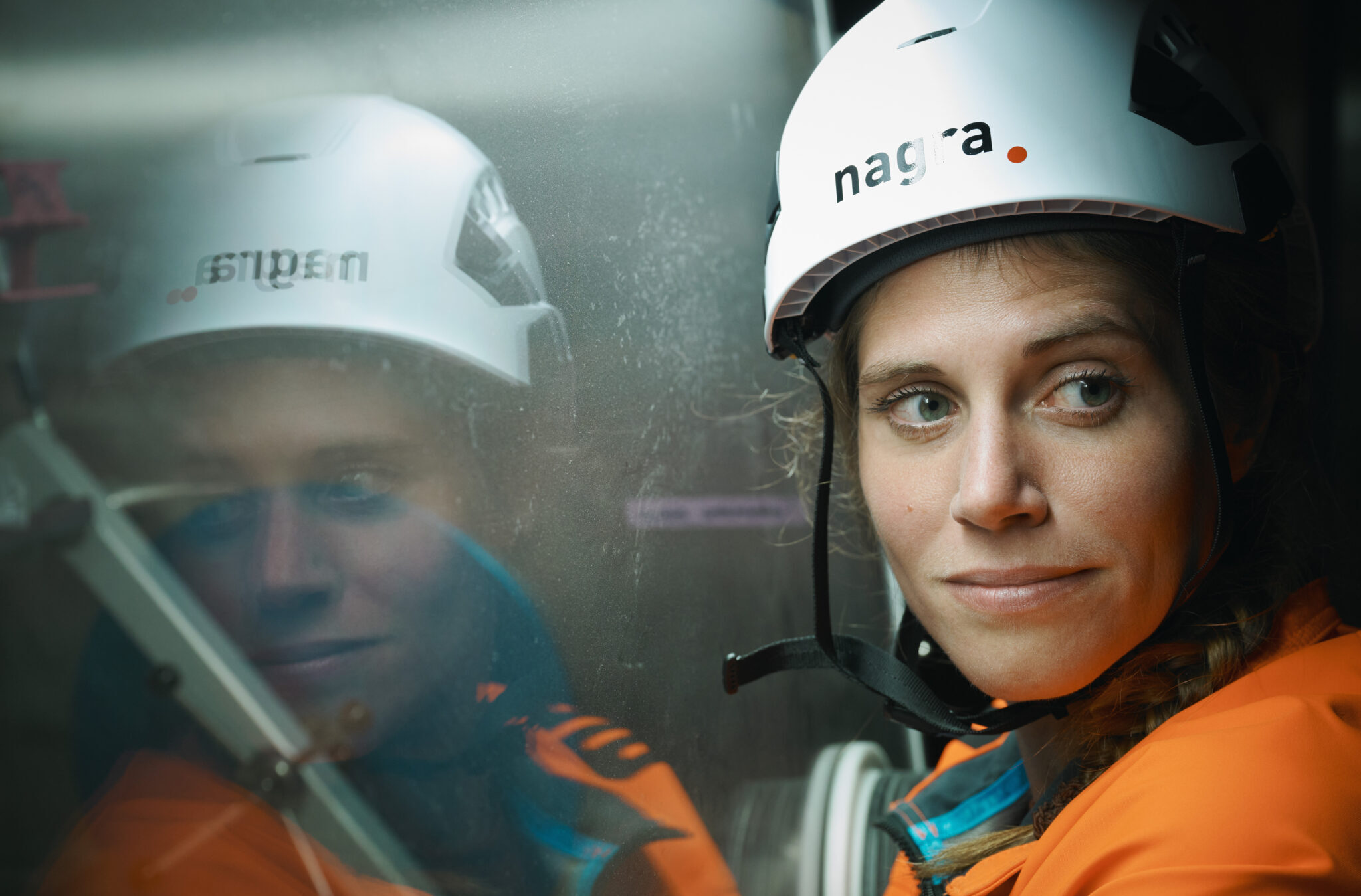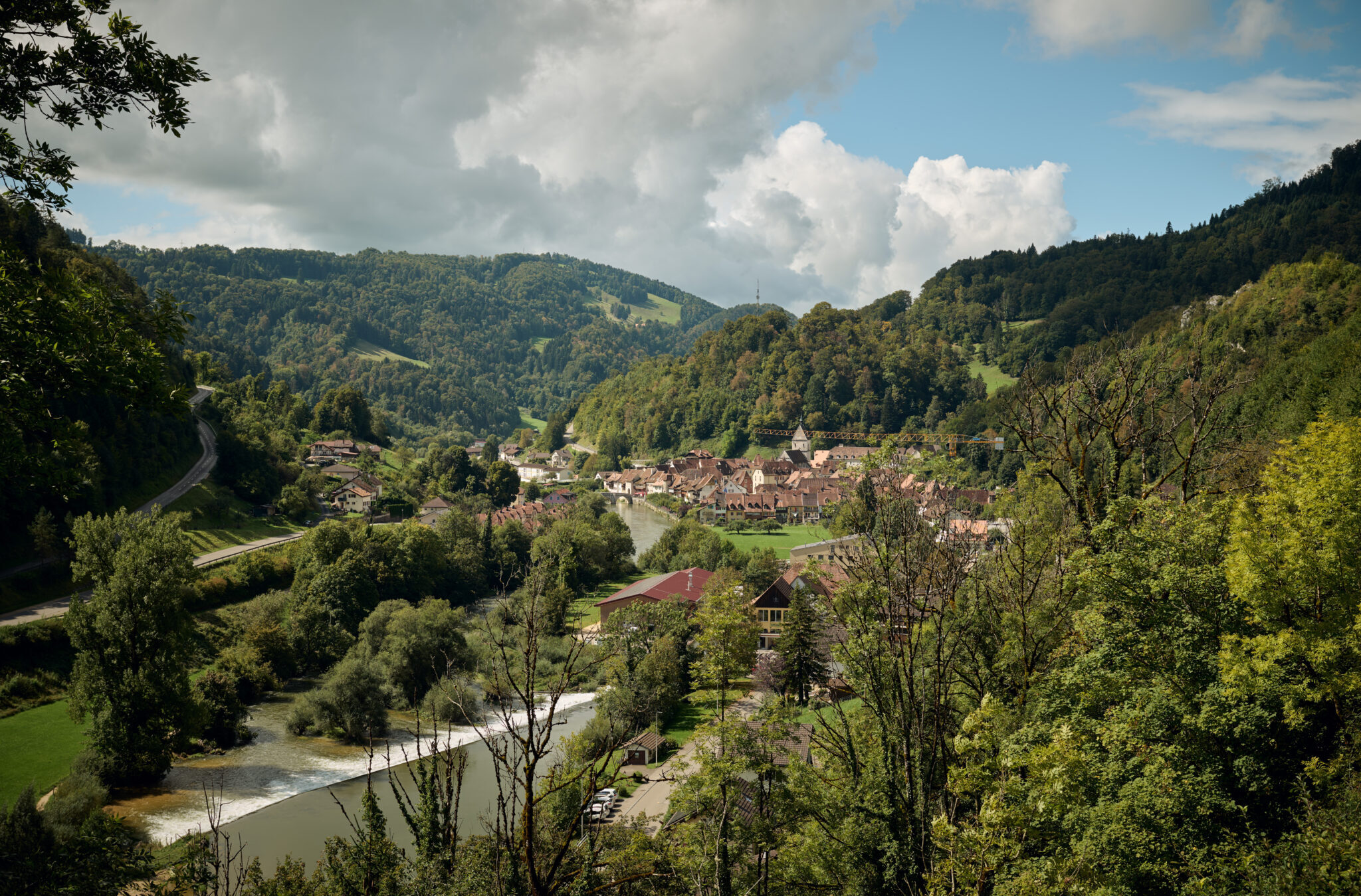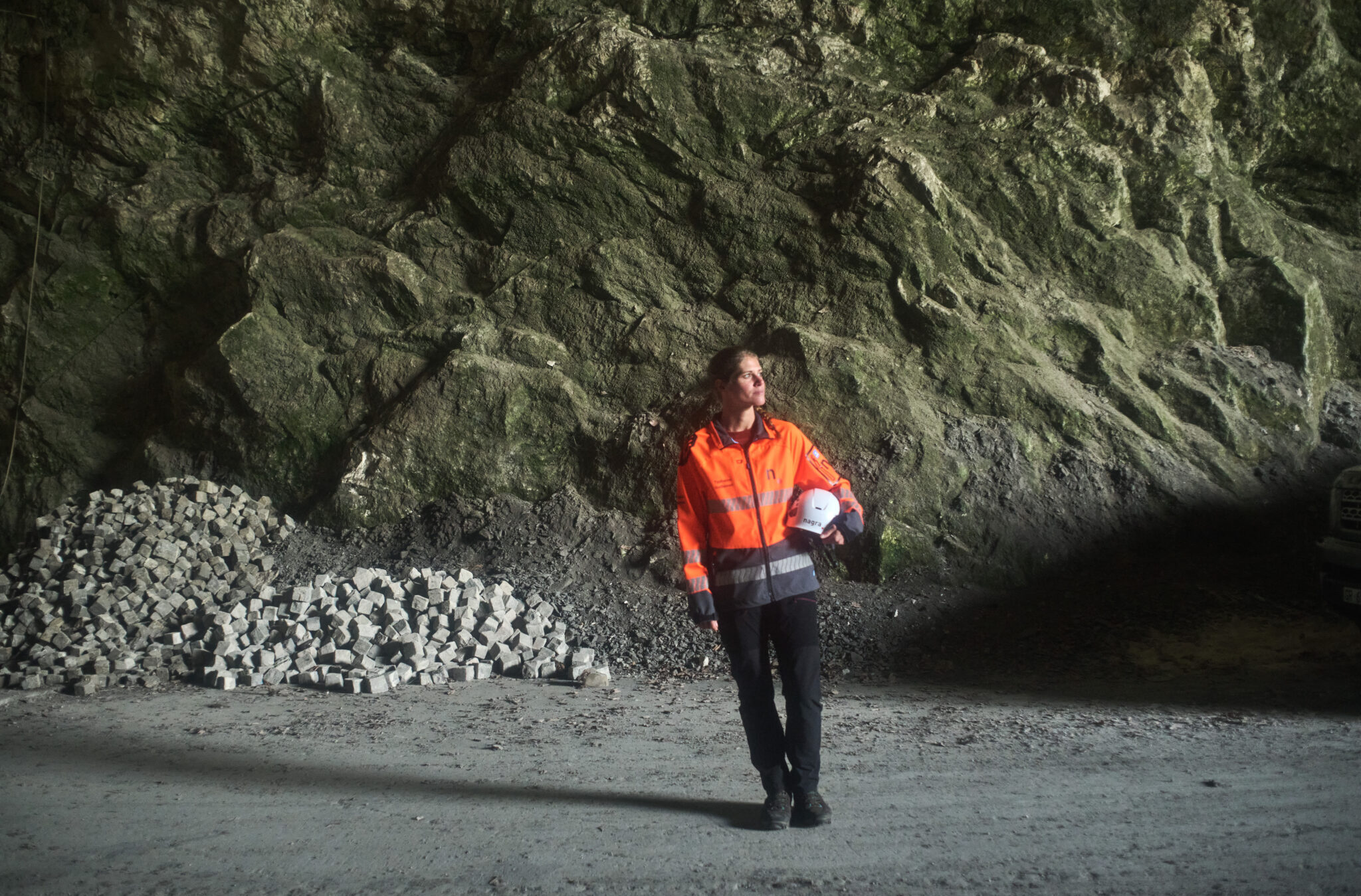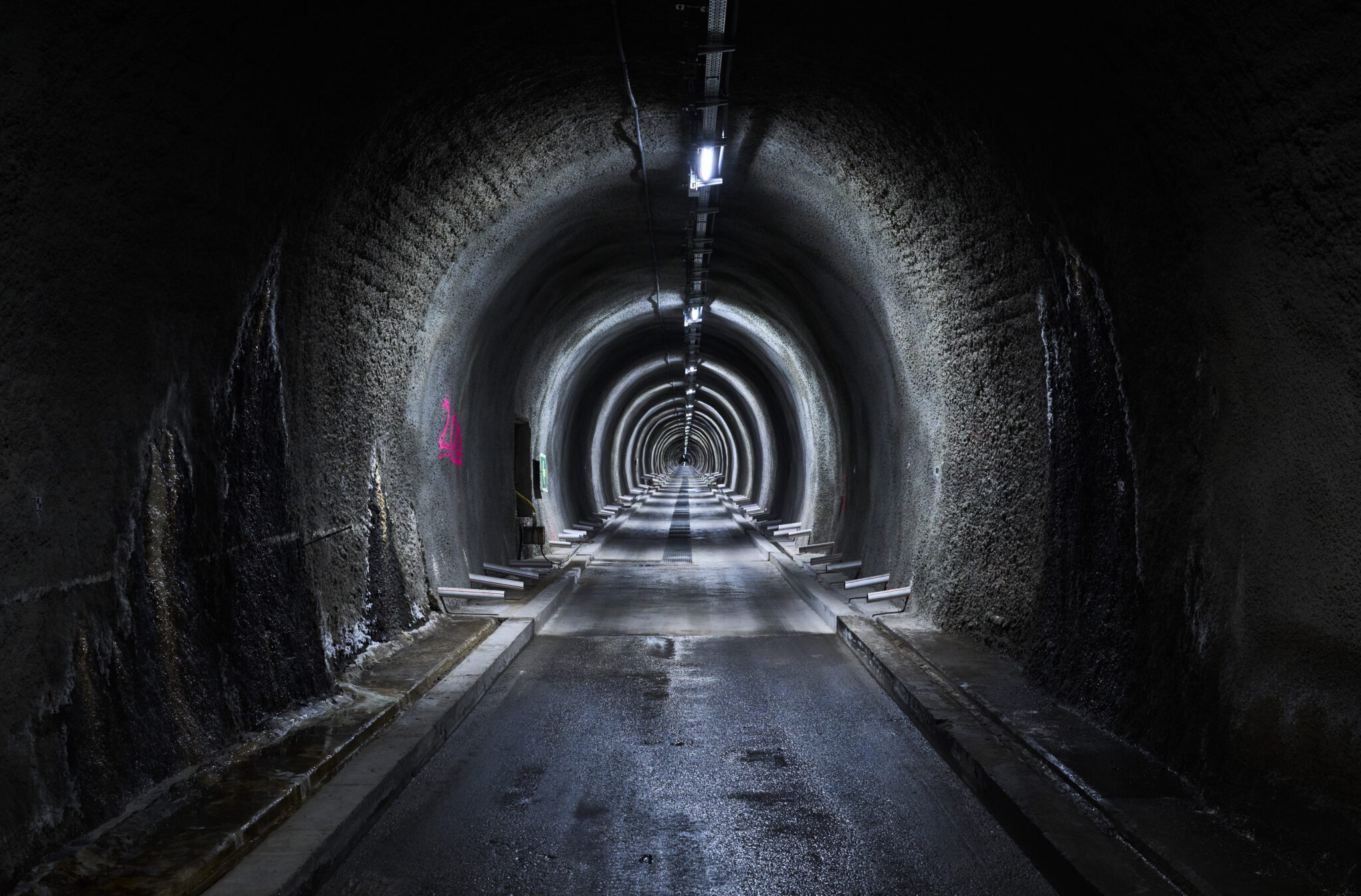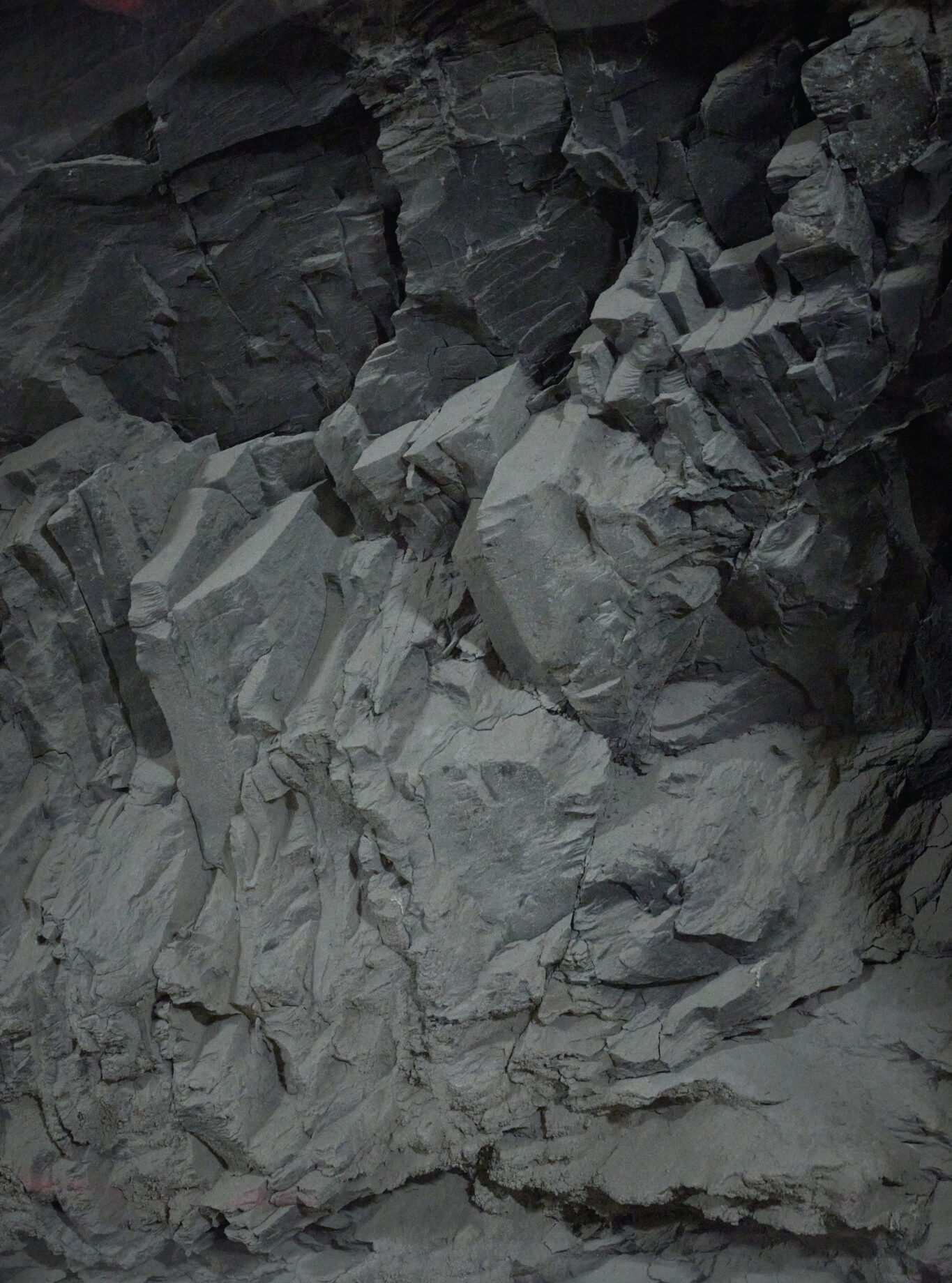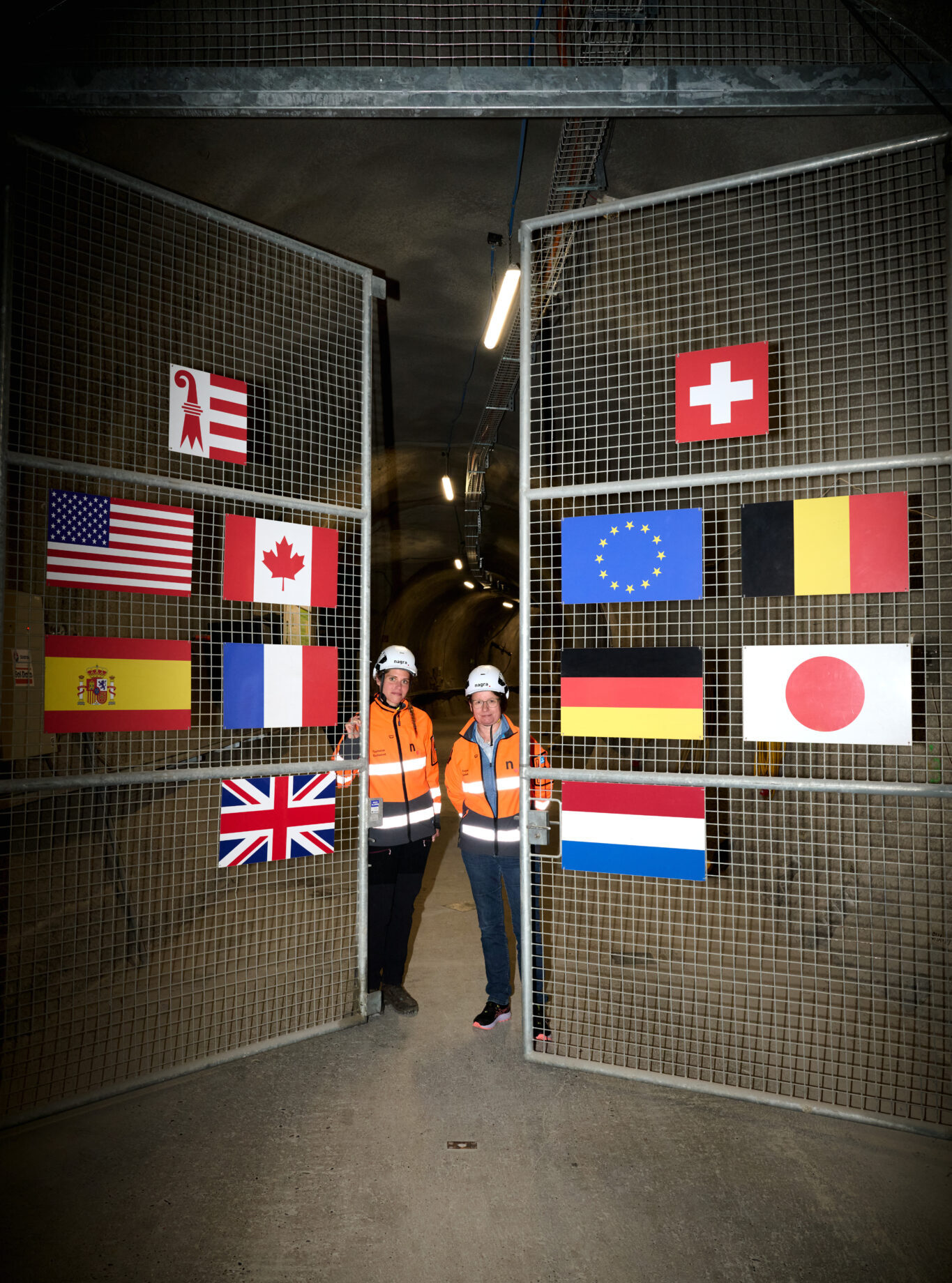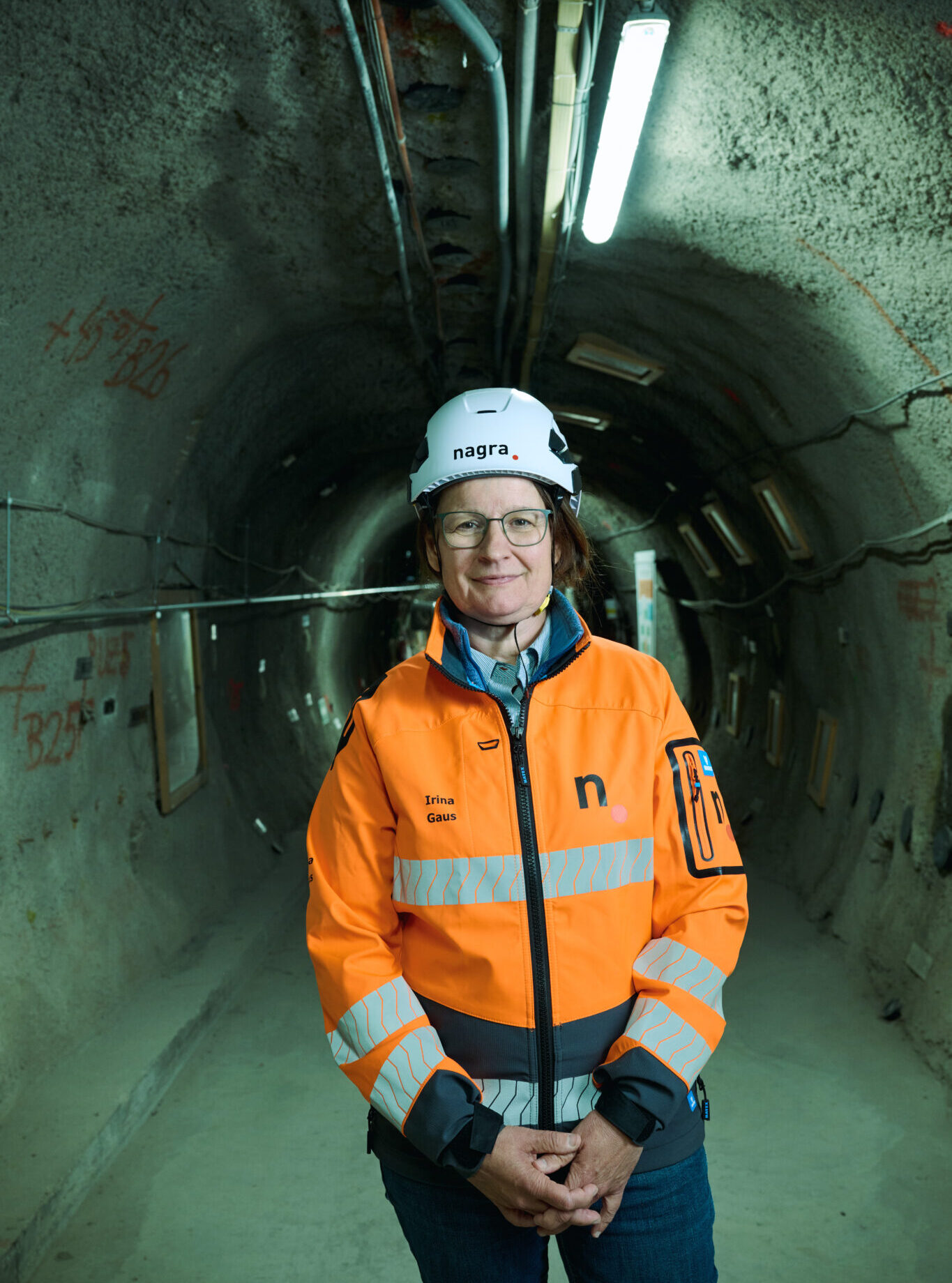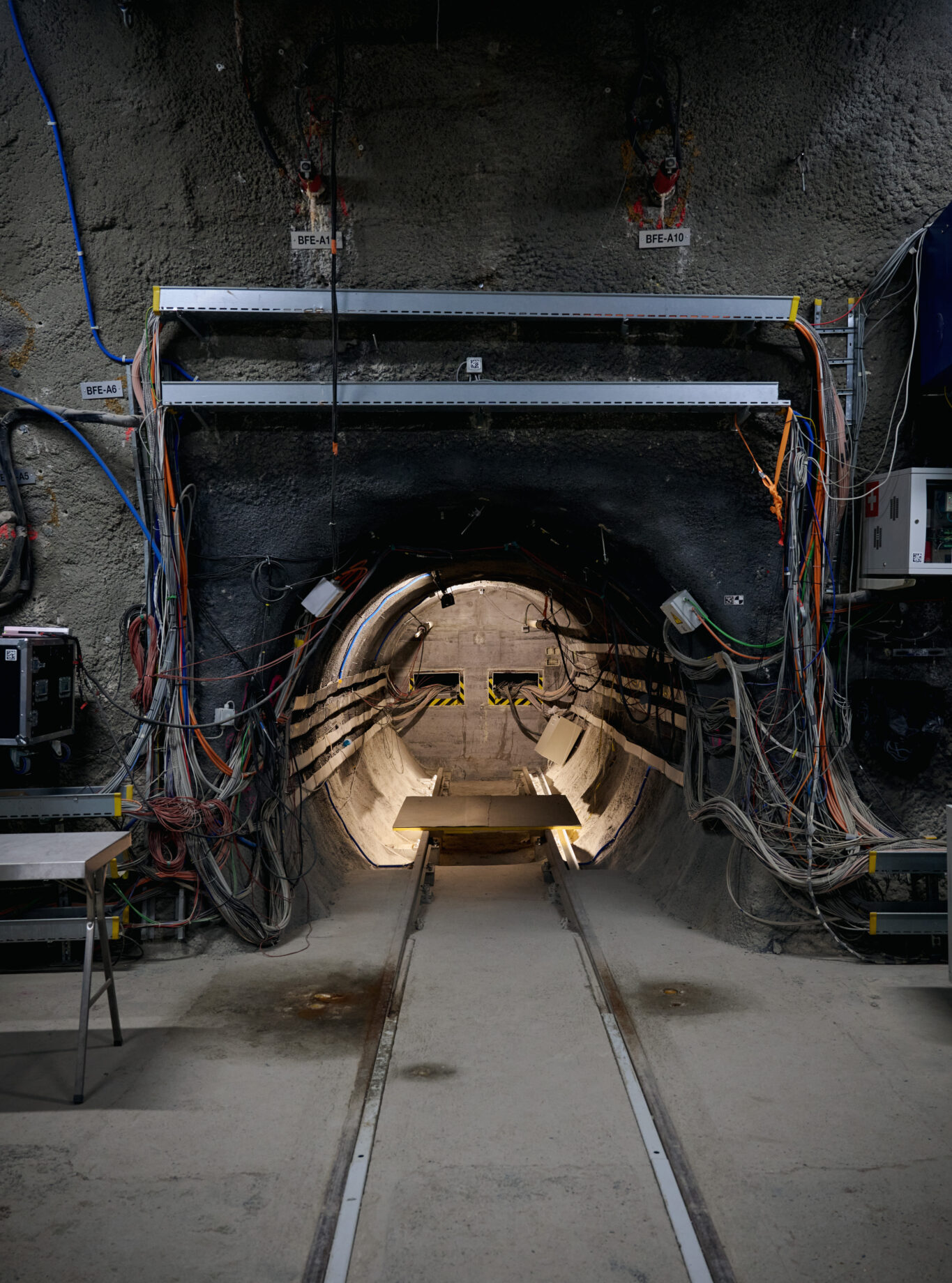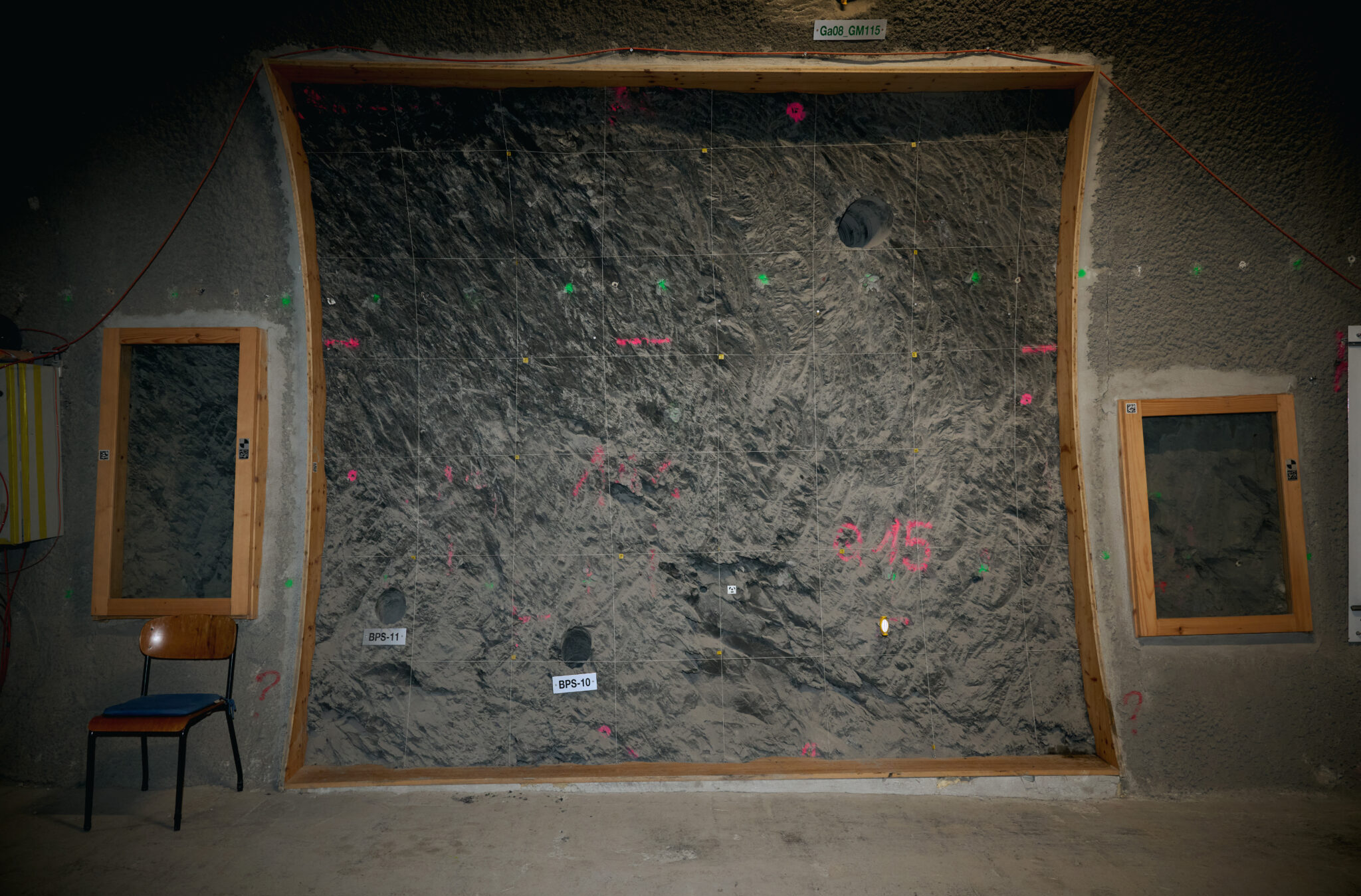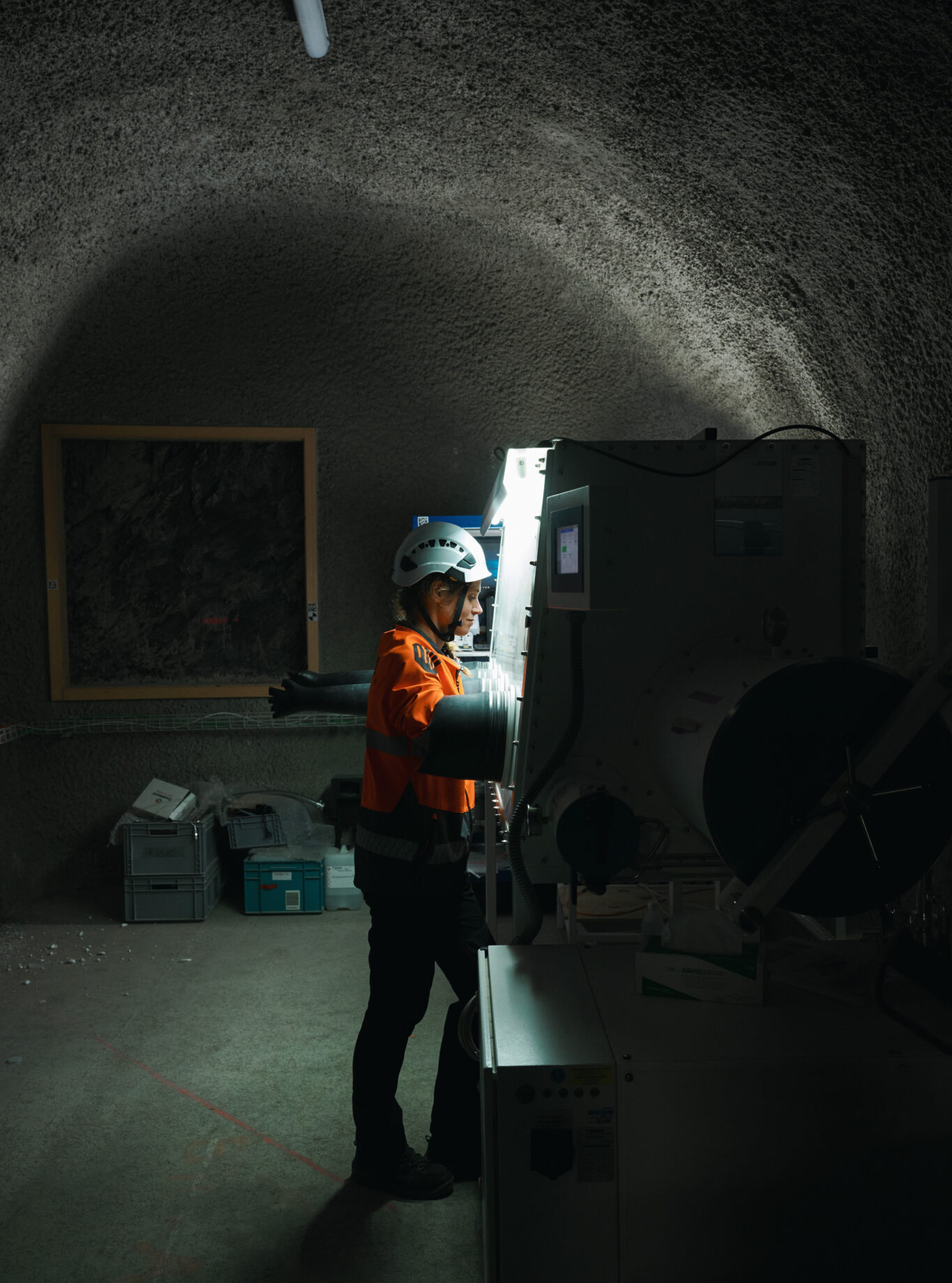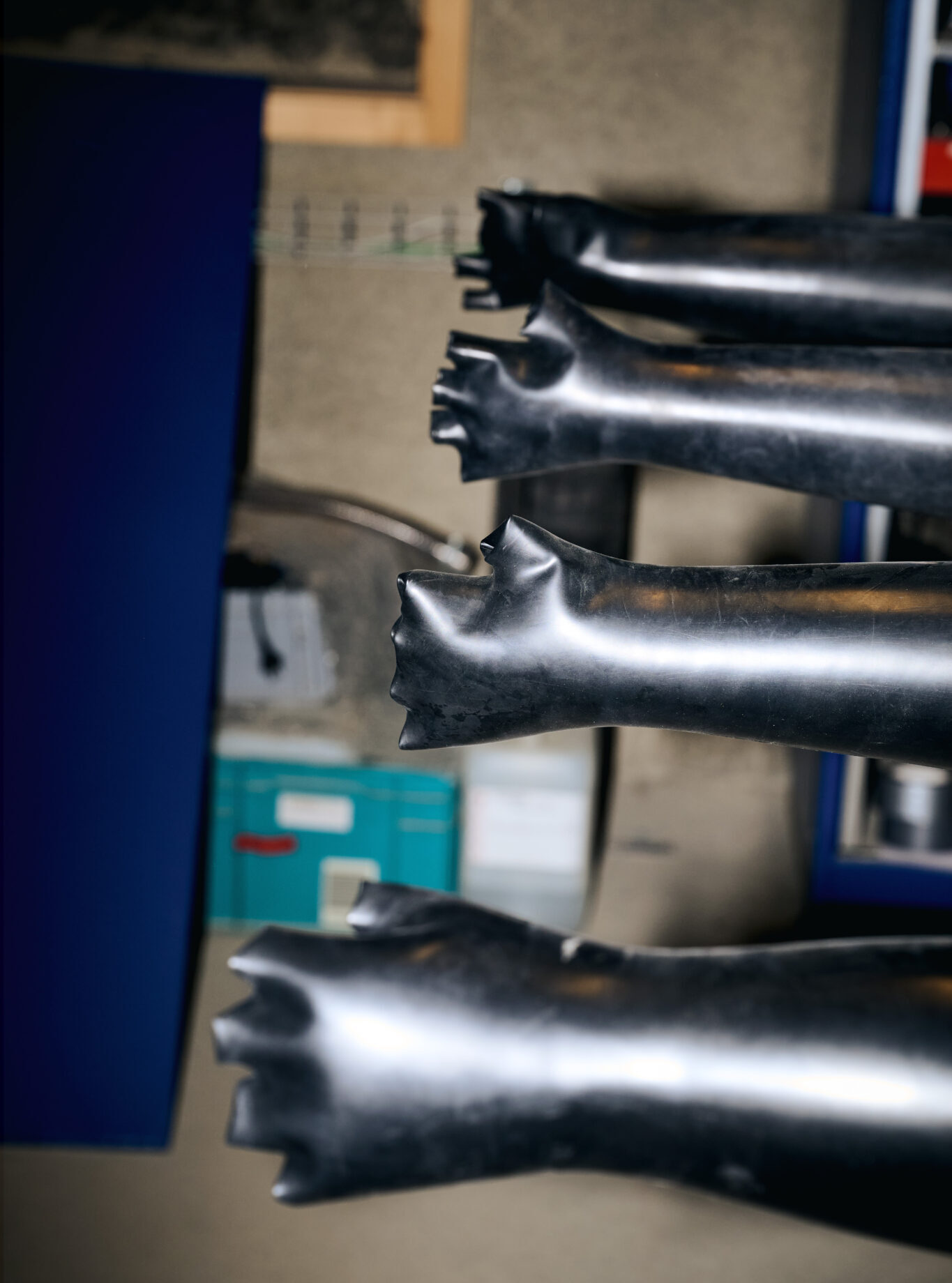“Risks” are the least of our concerns
In the Mont Terri Rock Laboratory located in the Jura Mountains, Nagra is carrying out tests for Switzerland’s deep geological repository – that is to remain intact for one million years. The big question: is there a scenario of which you have not thought?

by Nicola Brusa
Photography: Florian Kalotay
In hindsight, the harbingers of disaster were recognisable – that distant cracking, that dull rumble.
Of course, hindsight is always easier than foresight. The catastrophe itself is undeniable. A huge crack runs through the Zürcher Unterland (the northern part of Canton Zürich). It is hundreds of metres deep, so deep that it runs right through Nagra’s deep geological repository, where Switzerland’s radioactive waste was once emplaced. Spent fuel rods from the Beznau, Gösgen, Leibstadt and Mühleberg nuclear power plants, remnants from a time when Switzerland used nuclear fission to keep its households, industry and trains running. A few hundred or a few hundred thousand years ago. Will the geological catastrophe be followed by a nuclear one?
No, says geochemist Olivier Leupin.
No, says hydrogeologist Irina Gaus.
No, says geologist Typhaine Guillemot.
The three are working on the deep geological repository, Switzerland’s project of the century, which Nagra recommends should be constructed 800 metres below the Zürcher Unterland and closed and sealed around one hundred years from now. What these three scientists have in common: they aim to design a deep geological repository for our radioactive waste that will remain safe for one million years. To this end, they have analysed all potential risks and calculated countless scenarios: evident and conjured, probable and improbable, realistic – and unrealistic, such as the crack described here at the beginning, which tears the deep geological repository in two.
Irina Gaus is in her white Skoda, waiting at the security gate that leads to the Mont Terri Rock Laboratory. The yellow warning lights on the walls flash nervously, as if to say: if you’re not feeling apprehensive yet, now would be the time. The monstrous metal gate behind Gaus’ car is not yet fully closed, the one in front still blocks her way into the interior of the Jura mountain in Saint-Ursanne. Irina Gaus is a member of Nagra’s Executive Board and is responsible for ensuring that the planned deep geological repository will not already be obsolete when construction begins a few decades from now. “Head Optimisation” is her official title. The blinking yellow warning lights illuminate the reflectors on Gaus’ orange jacket again and again.
The security gate, it seems, is shrinking the people who want to enter the mountain. The brief moment when the gate behind them has closed and the one in front has not yet begun to open is enough for this sensation. Little white Skoda, huge grey tunnel. Then the jolt as the gate in front of the car opens a crack – and you very slowly drive into the mountain – miniature people in a miniature car. Irina Gaus has been there so often that she no longer notices her shrinkage. She likes to escape “the world out there”, she says as she steers the car through the labyrinth of tunnels.
What if the earth were to crack open now, a fine crack would suddenly meander inexorably across the shotcrete, causing the light to flicker? In the subterranean pitch darkness, we would not even be able to see the huge fissure that swallows up the Skoda shortly afterwards.

The risk of this scenario becoming reality is close to zero. In fact, it is geologically impossible. And even if it were to occur, the risk of radiation being released is close to zero: the scientists led by Irina Gaus have demonstrated this in several ways. Even this kind of fissure would not present any danger to humans or the environment. Developing these scenarios has a creative component, says Irina Gaus, in which you have to imagine everything that could possibly happen to the repository. Time horizon: one million years.
“Is it safe?” is a question of faith
Imagine twenty apocalypticists sitting at a long, oval table in Wettingen, Switzerland, and presenting scenarios, each one wilder than the last. Olivier Leupin sits at the end of the table on the only chair with armrests, smiling indulgently. His Bernese German inspires confidence as he keeps responding to each of our wild and wildest scenarios: “Of course we have thought of that. No, no danger to humans or the environment.”
When it comes to the safety of the planned deep geological repository, nobody is better informed than Olivier Leupin. And in the event that Nagra’s Head of Research and Development is unavailable, he and his team have recorded all their knowledge in the post-closure safety case, a study demonstrating the safety of the repository in the long term. The analyses and reports are piled up on a trolley in the office of Nagra’s Head of Research and Development. He is familiar with the thousands of pages like no other; if he needs a graphic to illustrate his point, he pulls the relevant subreport out of the pile and finds the corresponding page in no time at all. “We have the risks under control,” he affirms. What concerns him more are “the unknown unknowns”. What if something happens that you had somehow failed to think of? “It would annoy me greatly if someone came up with a scenario and I had to admit: ‘Bother! We didn’t think of that.’”
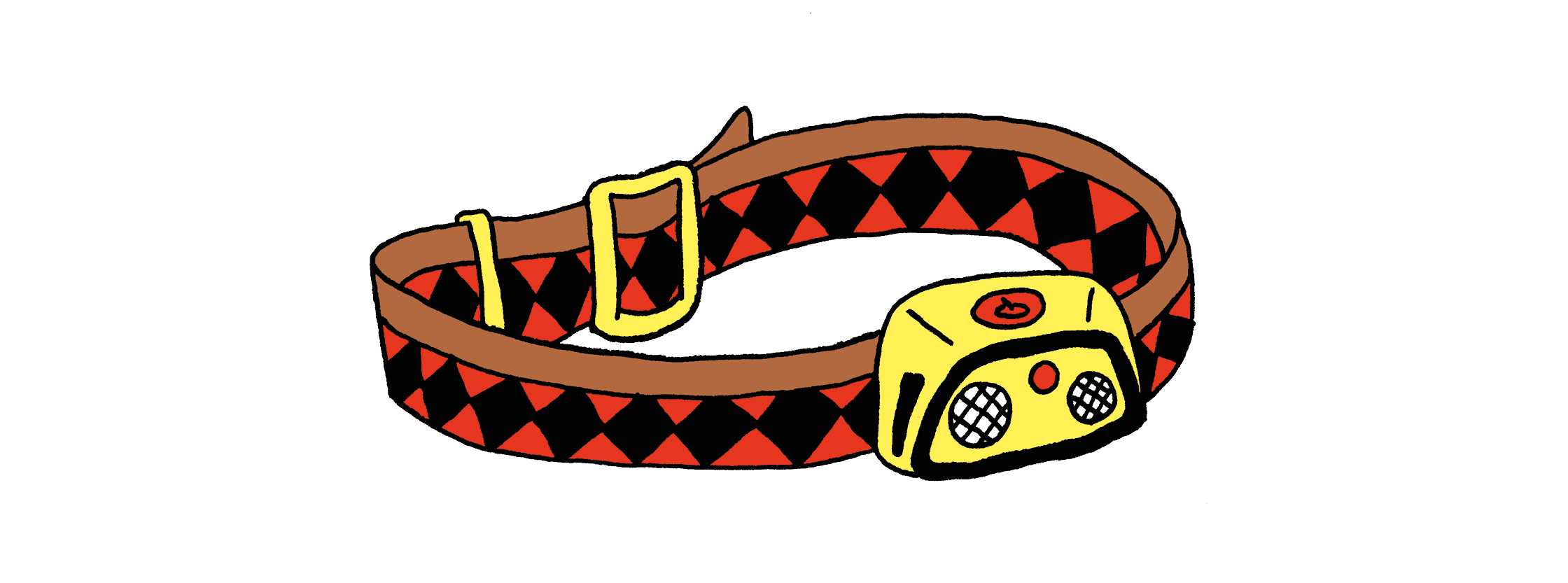
“The repository is designed to be so robust that individual elements can be removed without jeopardising safety.”
In the risk environment, this is called a “black swan”, an event that has not been taken into account. Black swans have consequences for the repository concept: barriers are added. “Even if something goes completely wrong, the repository will still be safe,” assures Leupin. This also means that radioactive waste disposal is based on excess precautions to rule out potentially fatal consequences of black swans.
Ultimately, Olivier Leupin and his team must succeed in convincing the Swiss population of the safety of the deep geological repository. It is a question of trust whether decades of research work are enough for people to conclude: yes, I think Nagra has the risks under control. People must believe that the deep geological repository is safe – Olivier Leupin knows that it is. In the worst case, however, that knowledge will be of no help to him because what people believe will carry more weight.
Speaking of faith: it also has its place underground. Saint Barbara, the patron saint of miners, sits enthroned on a small ledge in a tunnel and watches over the goings-on.
The best answer to everything: the Opalinus Clay
Nagra’s strongest argument and the reason why Irina Gaus keeps travelling to this Jura mountain is the Opalinus Clay. You do not have to be a hydrogeologist to see where the layers of quasi-impermeable rock begin: in the beginning, we enter Mont Terri on wet roads, but soon they are completely dry. It also stands to reason that water in combination with radioactive waste could have unfavourable consequences. “The Opalinus Clay also has self-sealing properties,” says Gaus, “which means that if cracks occur, they seal themselves as soon as water enters.” And it has a third outstanding advantage: radioactive substances effectively stick to the Opalinus Clay. All these properties entice Olivier Leupin to make a rather unscientific summary:
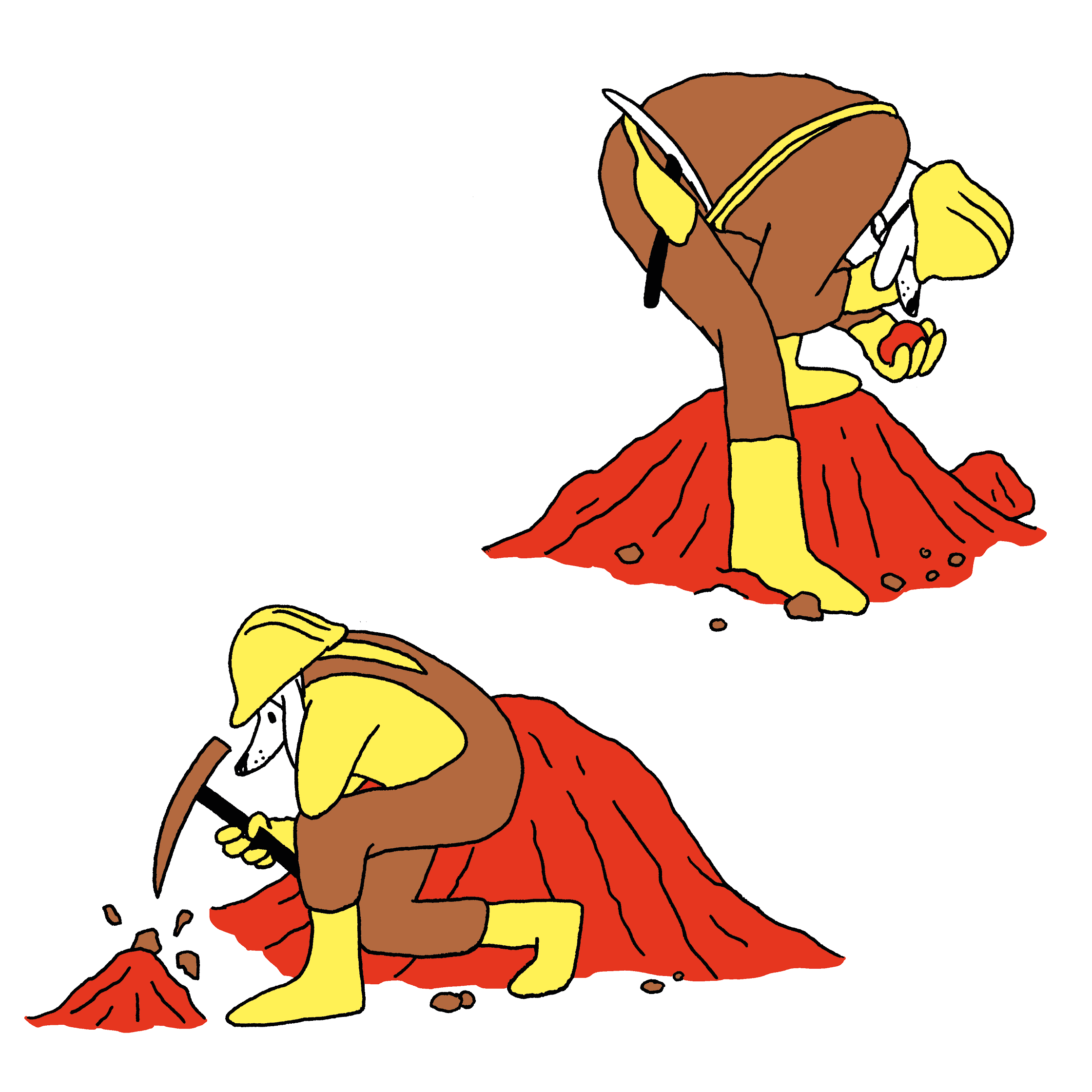
“The safety of the deep geological repository in the long term stands and falls with the geological conditions.” The repository is designed to be so robust that individual elements can be removed from the safety concept without jeopardising safety. To go to extremes: it would be no problem to ditch the steel disposal canisters holding the spent fuel assemblies, leave out the bentonite backfill surrounding the disposal canisters, or do without the concrete lining. However, without the Opalinus Clay, Switzerland’s repository concept would require an overhaul. Only the geological barrier can protect humans and the environment so well over this extremely long period of time.

Mont Terri is built in the same rock as the host rock for the planned deep geological repository at the Nördlich Lägern site. Typhaine Guillemot calls the underground research laboratory “a stroke of luck”. The Project Manager Safety and Inventory at Nagra has spent long days underground, conducting experiments in the Opalinus Clay 300 metres below ground in order to better understand the processes that will one day take place in the repository. From a geological viewpoint, the Opalinus Clay is an extraordinarily boring material, says geologist Guillemot: “Nothing happens.” But for a project with a time horizon of one million years, in which safety is paramount, a material cannot be boring enough, she adds. Her field of expertise: aspects related to gas. “The steel disposal canisters will corrode with time, producing gases that can increase the pressure in the deep geological repository.” How to counter this effect? Guillemot searched for answers to this question – and received help from an unexpected source: certain bacteria found in the Opalinus Clay break down the gases produced.
Research in peace and quiet
Typhaine Guillemot studied in France and has been working at Nagra for five years. She likes when her work takes her from the office to the underground research laboratory, to this rock covered with cables leading from the security gate of the Mont Terri motorway tunnel to a disused mine where Jura limestone was once extracted. For her, Mont Terri means peace and quiet, allowing her to focus on her work. It is important to her, says Guillemot, to use her scientific skills to find answers to specific problems. This is the reason why she works at Nagra. “We take everything to the extreme; every risk, no matter how inconsequential, is taken into consideration.” This is precisely what drives her: “The issue of radioactive waste disposal cannot simply be left to future generations.” Not even in a “reasonably safe repository”. This conviction was reinforced with the birth of her son: “We need to find solutions to dispose of this waste as safely as possible.”
Nagra identified the “safest site in Switzerland” and developed an “extremely robust concept” in parallel. Of course, it would be unscientific to claim that Nagra knows the risks one hundred per cent, or that it has them one hundred per cent under control. “But we are not far from one hundred per cent.”
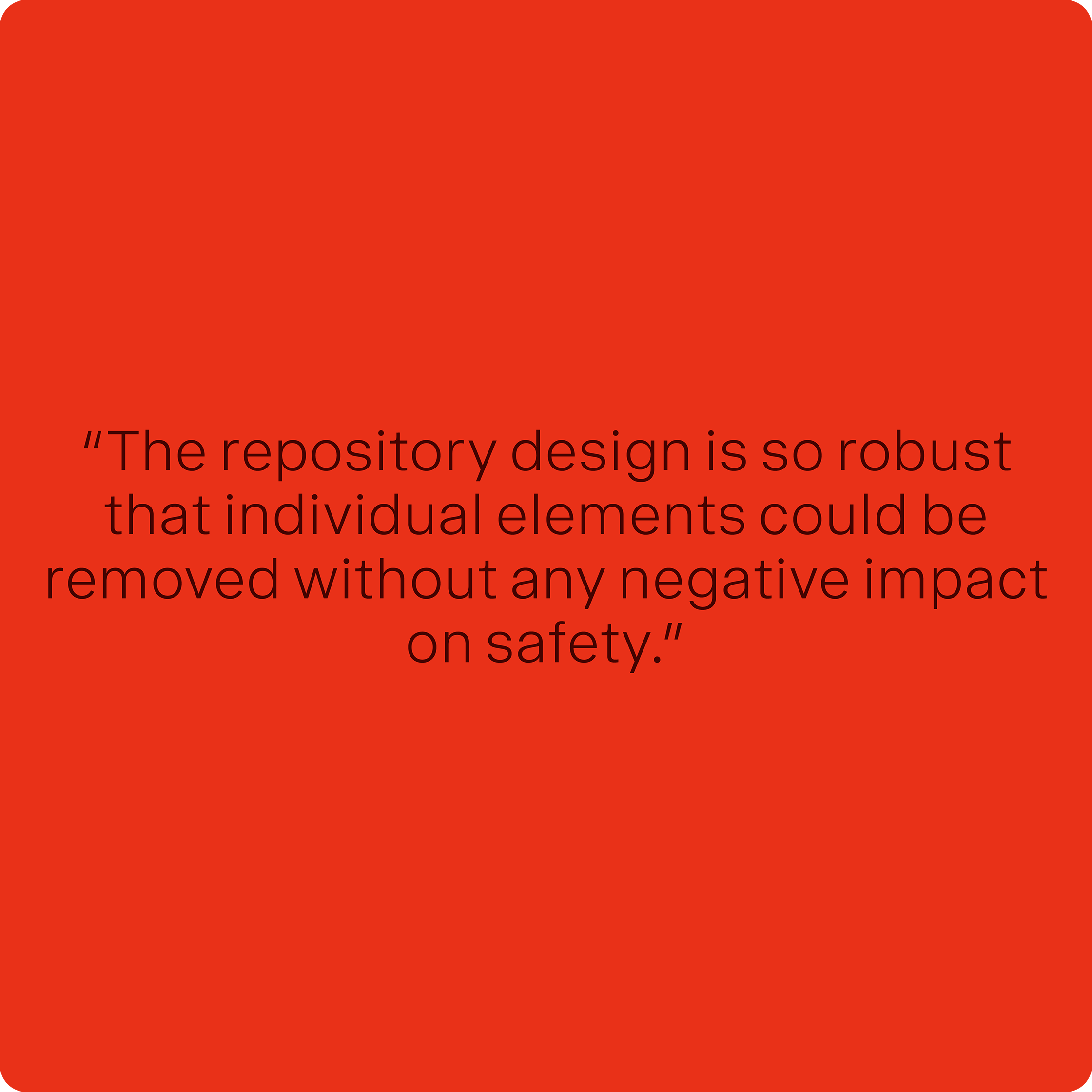
Irina Gaus is responsible for approaching these one hundred per cent. The Belgian has worked at Nagra for 18 years and has entered the mountain, the absolute silence, the maze of tunnels where it is easy to lose your bearings, countless times. Ear-protection dispensers, reminiscent of classic chewing gum machines, reveal that it has not always been as quiet as it is today. The machine dispenses coloured ear plugs when you turn the wheel. In Mont Terri, half the world works together to research topics relating to the disposal of radioactive waste. Researchers from Japan are taking the pulse of the mountain just like their counterparts from Germany, the USA and Canada. On the way to Nagra’s tunnel, we pass drill cores packed in wooden crates waiting for shipment, cables protruding from the rock all over the place, and windows built into the rock: wooden frame, Plexiglas and, for once, no shotcrete. Nagra is specifically researching how a repository can be constructed in the Opalinus Clay and determining which machines and techniques would be suitable for this purpose. At the same time, research is continuing into the processes that will take place in a deep geological repository.
Beyond “safest” – in search of the ultimate superlative
To date, fifty years of research have gone into the repository project. Nagra’s scientists have been familiarising themselves with the Opalinus Clay in the underground research laboratory for more than 25 years. Will fifty years of continuous research be enough to construct a safe deep geological repository?
“Yes,” says Irina Gaus. And they are continuously working on making it even more robust. The site selection for the repository is tantamount to a leap: “Now that we know where we want to construct the repository, we can customise the project,” explains Gaus. Experience gained until repository closure one hundred years from now, if everything goes as planned, will further enhance the knowledge. Planning one hundred years into the future entails a lot of “what-ifs”, says Gaus – and her own retirement. Working on a project that is designed to cover one million years “can only be abstract,” muses Gaus. And yet: “We have calculated everything so many times, analysed and assessed everything so precisely that we already have a high degree of certainty that the project will not fail due to our analyses.” Mont Terri has allowed Nagra to design the repository so robustly that it can even withstand black swans.
If Nagra were to build the repository today, “it would be safe”. And in a few decades, it will be even safer, adds Gaus. Has Nagra thought of everything and assessed every risk?
Yes, says geochemist Olivier Leupin.
Yes, says hydrogeologist Irina Gaus.
Yes, says geologist Typhaine Guillemot.
They have played through more than a hundred scenarios, including glaciation from the Alps burying the entire Zürcher Unterland under a metre-thick layer of ice. Even though humanity will have other problems by then – or none at all.
And what currently presents a risk?
Radioactive waste – for all its toxicity – has one advantage: it decays. Over one million years, radioactivity will decrease by 99.9 per cent. For this time period under consideration, the deep geological repository is “safely” designed. “Safe” is defined by numerous national and international regulations. Nagra plans the deep geological repository in line with these regulations and repeatedly checks that post-closure safety can be ensured.
The average annual radiation exposure of the Swiss population amounts to around 6 millisieverts. Around three quarters of this is attributable to natural radiation and a quarter to medical applications such as X-rays. Assuming potentially serious problems occur in the deep geological repository, for example the aforementioned fissure splitting the repository in two and reaching up to the surface, regulations require that the average radiation exposure of a person living directly above the repository increases by no more than 0.1 millisieverts. In comparison, the effective radiation dose for a cranial CT is around 2 millisieverts. Nagra’s concept is so robust that even in extreme scenarios, the dose limit will be many times below the legal threshold.
Back to Issue 004